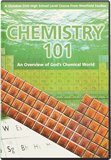The Molecular Sledgehammer
Originally published in Creation 24, no 2 (March 2002): 52-53.
The amazing story of how scientists struggled for years to duplicate an important bit of chemistry.
Great human inventions are usually recognized, with due fame and honour given to those whose work they are. The awarding of the Nobel Prizes is a yearly reminder to us that great achievements are worthy of recognition and reward.
So it seems a great injustice that the remarkable wonders of biochemistry brought to light in the past hundred years have won much renown for their human discoverers, but little honour for the One who first created them. The names of Watson and Crick are well known for their discovery of the remarkable DNA molecule and the way it is precisely replicated, despite the fact that they certainly cannot claim to have invented it. Even the great achievements of antiquity are still remembered, for instance as the “Seven Wonders of the Ancient World”. Perhaps there should be a recognition, by creationist biologists, of, say, “Seven Wonders of the Living World” in honour of God’s wonderful works in creating life. The DNA molecule would certainly have its place there. The light-harnessing ability of the chlorophylls (the chemicals that utilize the sun’s energy in green plants) might also find a place of honour. Another tiny but marvellous bit of biochemistry which could be nominated to such a position is a mechanism which might be termed “the molecular sledgehammer”.
To appreciate the work done by this “sledgehammer”, it is important to understand the role of the element nitrogen in the living world. The two main constituents of our atmosphere, oxygen (21%) and nitrogen (78%), both play important roles in the makeup of living things. Both are integral parts of the amino acids which join together in long chains to make all proteins, and of the nucleotides which do the same thing to form DNA and RNA. Getting elemental oxygen (O2) to split apart into atoms and take part in the reactions and structures of life is not hard; in fact, oxygen is so reactive that keeping it from getting into where it’s not wanted becomes the more challenging job. However, elemental nitrogen poses the opposite problem. Like oxygen, it is diatomic (each molecule contains two N atoms) in its pure form (N2); but, unlike oxygen, each of its atoms is triple-bonded to the other. This is one of the hardest chemical bonds of all to break. So, how can nitrogen be brought out of its tremendous reserves in the atmosphere and into a state where it can be used by living things?
Perhaps this problem can be better appreciated by putting it into terms of human engineering. We need nitrogen for our bodies, to form amino acids and nucleic acids. We must get this nitrogen from our food, whether plant or animal. The animals we eat must rely on plant sources, and the plants must get it from the soil. Nitrogen forms the basis for most fertilizers used in agriculture, both natural and artificial. Natural animal wastes are rich in nitrogen, and it is largely this property that makes them enrich the soil for plant growth. In the late 1800s, a growing population created a great need for nitrogen compounds that could be used in agriculture. At the time, the search for more usable nitrogen was considered a race to stave off Malthusian1 predictions of mass starvation as population outgrew food supply. So chemists wrestled for years with the problem of how to convert the plentiful nitrogen in the air into a form suitable for use in agriculture.
Since naturally occurring, mineable deposits of nitrates were rare, and involved transportation over large distances, an industrial process was greatly needed. Finally, around 1910, a German, Fritz Haber, discovered a workable large-scale process whereby atmospheric nitrogen could be converted to ammonia (NH3). His process required drastic conditions, using an iron-based catalyst with around 1000oF (540oC) heat and about 300 atmospheres of pressure. Haber was given the 1918 Nobel Prize for chemistry because of the great usefulness of his nitrogen-splitting process to humanity.
One might ask, if elemental gaseous nitrogen is such a tough nut to crack, how do atoms of nitrogen ever get into the soil naturally? Some nitrogen is split and added to the soil by lightning strikes. Again, it is a reminder of the force necessary to split the NN bond that the intense heat and electricity of lightning are needed to do it. Still, only a relatively minor amount of nitrogen is added to the Earth’s topsoil yearly by thunderstorms. How is the remainder produced?
The searching chemists of a century ago did not realize that an ingenious method for cracking nitrogen molecules was already in operation. This process did not require high temperatures or pressures, and was already working efficiently and quietly to supply the Earth’s topsoil with an estimated 100 million tons of nitrogen every year. This process’s inventor was not awarded a Nobel Prize, nor was it acclaimed with much fanfare as the work of genius that it is. This process is humbly carried on by a few species of the “lowest” forms of life on Earth—bacteria and blue-green algae (Cyanobacteria).
Some of these tiny yet amazingly sophisticated organisms live in symbiosis (mutually beneficial “living together”) with certain “higher” plants, known as legumes. The leguminous plants include peas, soybeans and alfalfa, long valued as crops because of their unique ability to enrich the soil. The microbes invade their roots, forming visible nodules in which the process of nitrogen cracking is carried on.
Modern biochemistry has given us a glimpse of the enzyme system used in this process. The chief enzyme is nitrogenase, which, like hemoglobin, is a large metalloprotein complex.2 Like Fritz Haber’s process, and like catalytic converters in cars today, it uses the principle of metal catalysis. However, like all biological enzymatic processes, it works in a more exact and efficient way than the clumsy chemical processes of human invention. Several atoms of iron and molybdenum are held in an organic lattice to form the active chemical site. With assistance from an energy source (ATP) and a powerful and specific complementary reducing agent (ferredoxin), nitrogen molecules are bound and cleaved with surgical precision. In this way, a “molecular sledgehammer” is applied to the NN bond, and a single nitrogen molecule yields two molecules of ammonia. The ammonia then ascends the “food chain”, and is used as amino groups in protein synthesis for plants and animals. This is a very tiny mechanism, but multiplied on a large scale it is of critical importance in allowing plant growth and food production on our planet to continue.
Currently, in another application of genetic engineering, chemists are trying to improve the efficiency of the Haber process by implanting the genetic instructions for this nitrogenase complex into coliform bacteria (which may yield significant results when a host of associated bioengineering problems have been solved).3 Thus, man tacitly acknowledges the pre-existence of a vastly superior technology for nitrogen breakdown, but fails to acknowledge or give thanks to God for it. And, once again, man does his imperfect best to copy the perfection of design that God achieved without effort in the first week of this world.
One author summed up the situation well by remarking, “Nature is really good at it (nitrogen-splitting), so good in fact that we’ve had difficulty in copying chemically the essence of what bacteria do so well”.4 If one merely substitutes the name of God for the word “nature”, the real picture emerges.
Creationist Christians are often accused of having the same easy answer for any question about specific origin of things in nature: the “God of the gaps” did it. But this criticism can be easily turned around. What answers do evolutionists give to explain the origin of microscopic marvels like the molecular sledgehammer? They can’t explain them scientifically, so they resort to a standard liturgy, worshipping the power of blind chance and natural selection.
One thing is certain—that matter obeying existing laws of chemistry could not have created, on its own, such a masterpiece of chemical engineering. To believe that it was worked out by a wise and caring Creator, who provides all necessary things for the life of His creatures, is far more reasonable than the mystical evolutionary alternative. One grows tired of hearing the same monotonous mantra that “we know evolution did it, we just don’t know how.”
Footnotes
- Thomas Malthus (1766-1834), a clergyman who wrote an essay which claimed to demonstrate that the population would always greatly outstrip its food supply. This may have greatly influenced Darwin with its emphasis on a struggle for survival.
- Nitrogen Fixation and Nitrogenase, <nitrolab.bio.uci.edu/complex.html>, 7 March 2001.
- Stryer, L., Biochemistry, 3rd ed., W. H. Freeman and Company, New York, pp. 576-77, 1988.
- Fine, L.W., Chemistry Decoded, Oxford University Press, London, pp. 320-330, 1976.
Recommended Resources

Answers in Genesis is an apologetics ministry, dedicated to helping Christians defend their faith and proclaim the good news of Jesus Christ.
- Customer Service 800.778.3390
- © 2025 Answers in Genesis





